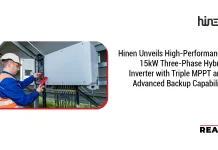UL Solutions, a global leader in applied safety science, introduced the powerful new version 1.10 of HOMER Grid modeling software, developed to help accelerate and simplify the design and optimizing electric vehicle (EV)
With the rapid rise of electric vehicles, energy project developers, engineering companies and electric vehicle charging station providers increasingly need to evaluate the costs, revenue and performance of a proposed charging station in the feasibility stage of the project. HOMER Grid 1.10 allows users to quickly calculate potential revenue from EV charging based on user-defined charging prices and the costs of supplying electricity from the grid or using renewable generation and on-site storage. These new features add to HOMER Grid’s strong modeling of on-demand fast charging and managed or deferred “smart” mode charging when time-of-use energy rates are lower. The software enables project developers to reduce the time and uncertainty of evaluating the return on investment of a proposed renewable energy plus storage charging station for a specific site, maximize the value of the project and demonstrate that value to customers . Modeling results can also help speed up the permitting process, reduce time from budget to construction, and provide data on cost savings and revenue generation that mitigate project risk and can lead to better financing terms.
HOMER Grid integrates extensive databases on electric loads, utility tariffs, incentives, demand response programs, solar irradiance and other meteorological data, allowing developers to analyze the feasibility of a potential location and system configuration. as well as compare multiple sites quickly.
Also Read : Scout Signs Power Purchase Agreement with Colgate-Palmolive for 209 MW Solar Farm
“With HOMER Grid, developers can determine the best and cheapest system to power a charging station in a matter of minutes. Using the software’s sensitivity analysis engine, they can evaluate the interaction of real-life variables such as daily fluctuations in load demand and time-of-use electricity rates Developers can confidently forecast revenue and return on investment, helping all stakeholders understand the total value of the project and accelerate decision making,” said Parangat Bhaskar, Product Manager, HOMER Software, UL Solutions.
To perform the analysis, HOMER Grid runs thousands of simulations, optimizing scenarios for multiple complex variables in a matter of minutes, including electric loads, utility rates, time-of-use charges, incentive programs, grid power outages, local generation and battery storage, capital expenditures, operational costs and payback periods of solar energy, and determines the lowest cost solution. Thanks to HOMER Grid’s technical and economic modeling, designers can:
- Conduct a robust forecast analysis.
- Maximize revenue and return on investment.
- Minimize the impact on the electrical grid.
- Minimize risks by identifying high probability scenarios and explicitly modeling worst-case scenarios.
- Confidently provide your customers with EV charging revenue projections.
“At the end of the day, information is power. HOMER Grid helps minimize uncertainty with simulation results and can therefore help increase stakeholder confidence in the feasibility of a charging station. proposed electric vehicles. Homer GRID can help projects develop faster and more efficiently, with potentially more predictable results,” Bhaskar said.
Sales of electric vehicles are expected to increase significantly, and both the federal government and the private sector are investing in building infrastructure for charging these vehicles. However, successful adoption of electric vehicles at the expected scale will require access to reliable charging stations across the country, which is a difficult task.
“It’s not as easy as deciding to add EV charging to your parking lot and that’s it. The increase in electric load is likely to outpace the capacity of the existing power grid to supply this complex new type of charging safely and sustainably. And grid modernization is a long and expensive process. Customers foot the bill for these costly upgrades in many ways, including large increases in demand rates. The solution lies in building microgrids of renewable energy or other energy resources. (DER) to power the charging stations and minimize the impact on the local grid. HOMER Grid allows the companies that will provide those charging stations to carry out their mission with success and confidence.“Research has shown that a successful EV charging experience increases customer loyalty to that company,” Bhaskar said.
Other updates to HOMER Grid 1.10 include the addition of California ‘s new Net Energy Metering (NEM) 3.0 rates , which strengthen incentives for solar-plus-storage systems in that state. Additionally, HOMER Grid allows users to import project production data from other design software. A new enhancement allows users to import multiple data files, for example from multiple solar photovoltaic (PV) grids, to combine them into a single energy modeling project in HOMER Grid 1.10.
charging stations powered by distributed renewable energy plus storage, which can maximize your potential revenue and return on investment.
SOURCE : PRNewswire




